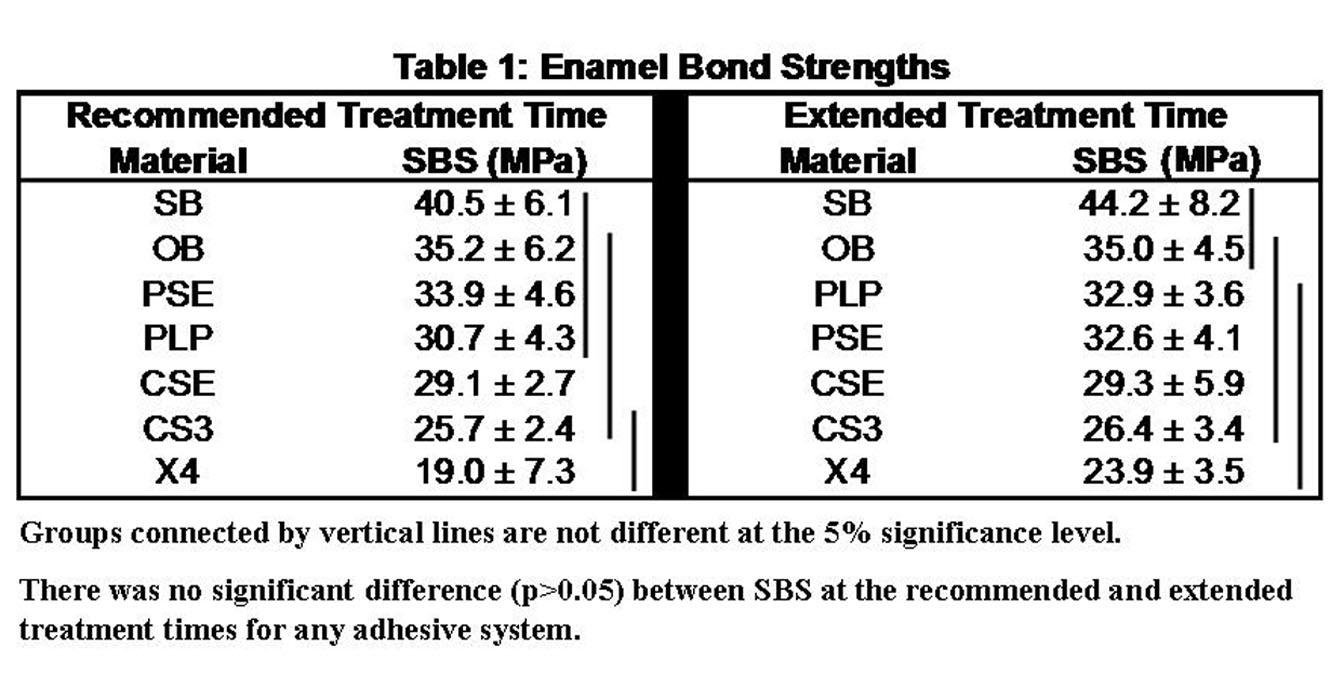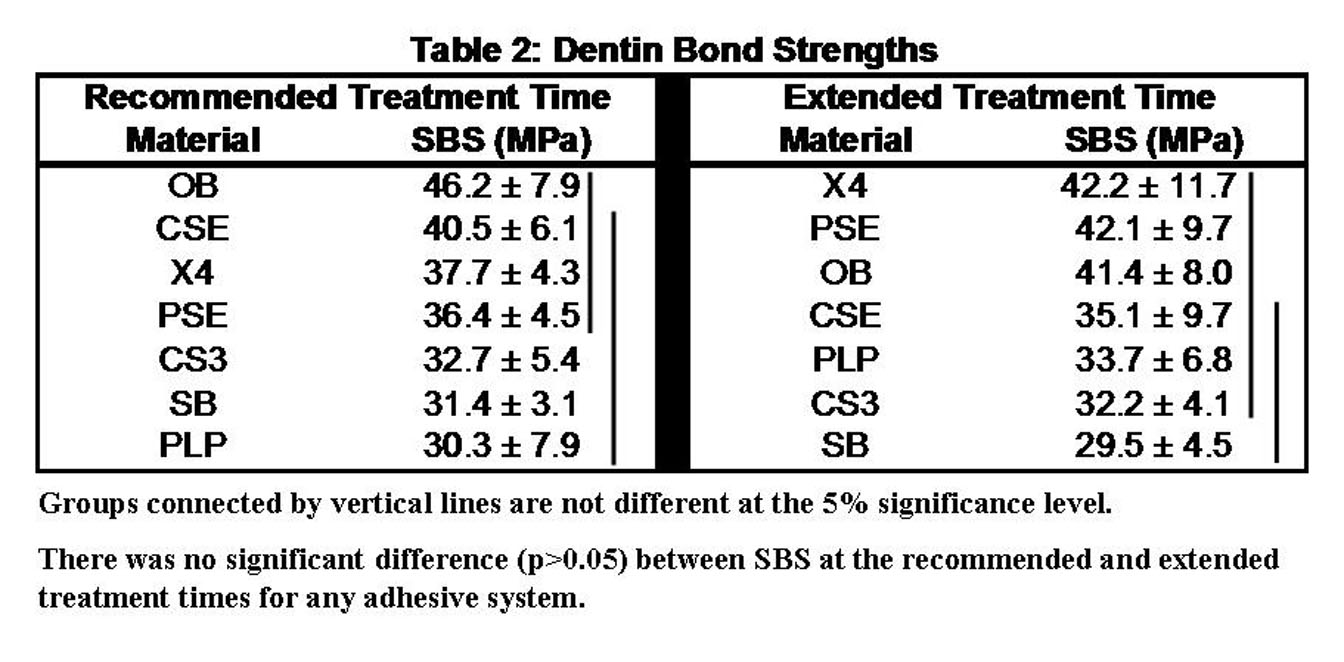ABSTRACT: 0835
Adhesive Shear Bond Strengths Using Recommended and Extended Treatment Times
| N.S. KIMMES, W.W. BARKMEIER, and R.L. ERICKSON, Creighton University, Omaha, NE, USA |
Many newer generation adhesive systems use acidic monomers rather than phosphoric acids for conditioning tooth surfaces. Objective: To determine enamel and dentin shear bond strengths of traditional etch-and-rinse and self-etch adhesive systems using recommended and extended treatment times. Methods: Seven adhesive systems were used in this study: 1)Adper Single Bond Plus (SB), 2)Xeno IV (X4), 3)Adper Prompt L-Pop (PLP), 4)Clearfil SE Bond (CSE), 5)Clearfil S3 Bond (CS3), 6)OptiBond Solo Plus (OB), 7)Peak SE (PSE). Z100 resin composite was bonded to one hundred forty (n=10) flat ground (4000 grit) human enamel and dentin surfaces in an Ultradent bonding fixture using each manufacturer's recommended time for the conditioning agent and an extended treatment time of 60 seconds. Specimens were stored in water for 24 hours at 37oC and shear bond strengths (SBS) were determined in a universal testing machine with a crosshead speed of 1mm/min. ANOVA and Tukey's post hoc test were used for data analysis. Results: The results are presented in Table 1 and Table 2: Conclusions: Phosphoric acid conditioning of enamel yielded higher bond strengths than self-etch acidic monomers. Excellent bond strengths to dentin were achieved with both phosphoric acid and acid monomer conditioning. Extending the treatment time of the adhesive systems on enamel or dentin did not increase or decrease bond strengths. |
| Seq #125 - Environment, Material, and Technique Impacts on Bond Strength 2:45 PM-3:45 PM, Friday, April 4, 2008 Hilton Anatole Hotel Trinity I - Exhibit Hall |
|
Back to the Dental Materials 1: Adhesion - Bond Strength Testing and Mechanisms Program |
©Copyright 2008 American Association for Dental Research. All Rights Reserved.

